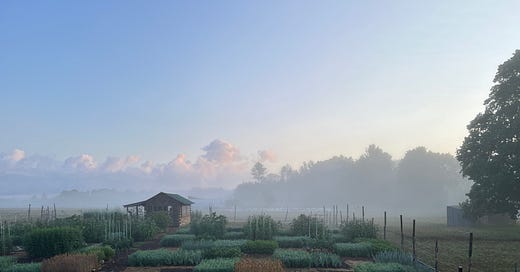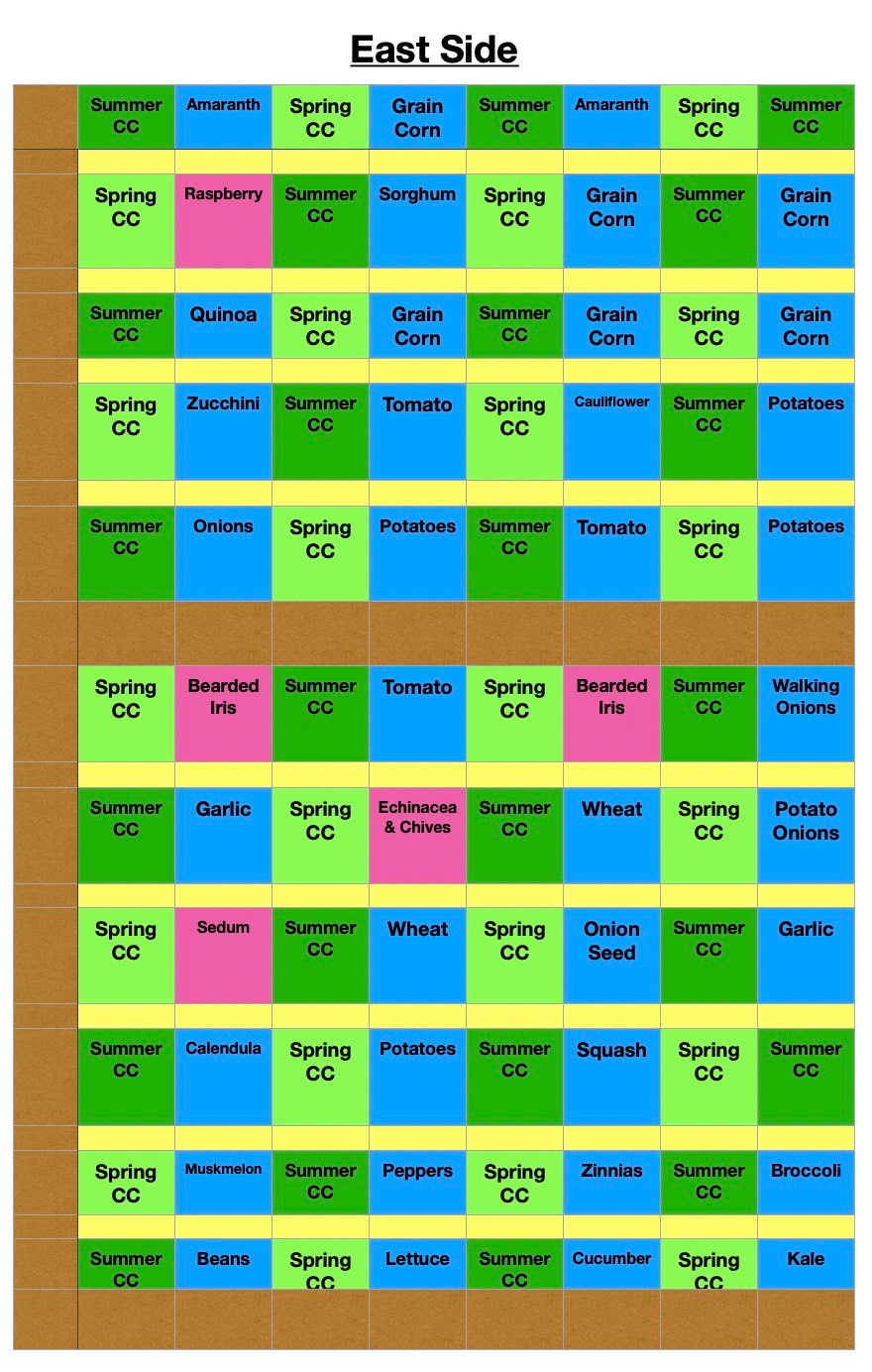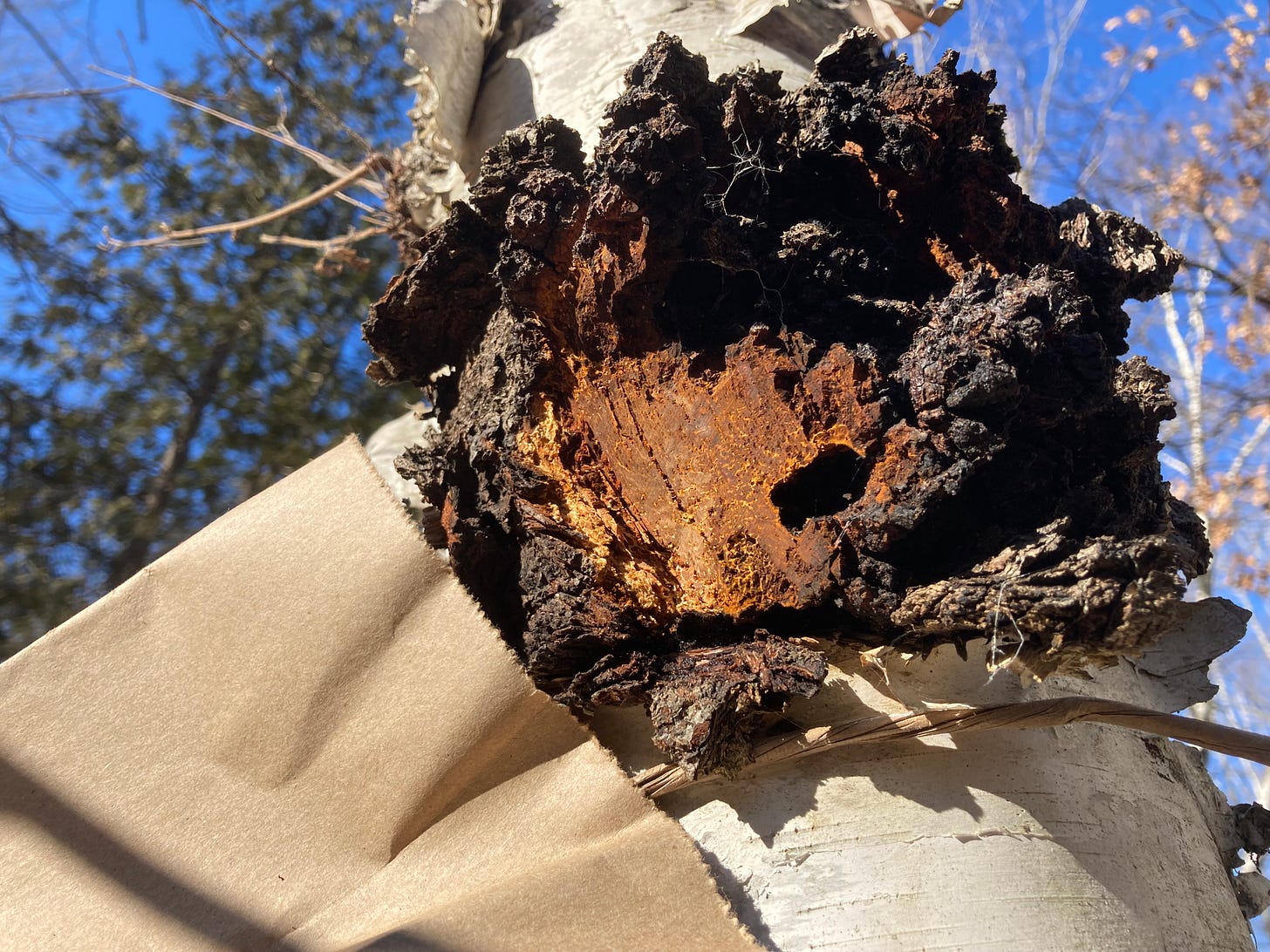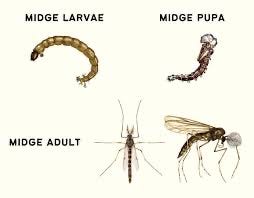December 2nd, 2023 Issue
Remineralizing The Soil / Pray Without Ceasing / Spreadsheets For Garden Planning / Chaga- Inonotus obliquus / Float Fishing #9 Midges / Fly Tying #9 Sizing Dry Fly Hackles
Remineralizing The Soil
In the last issue, I shared with you how I prepare my garden beds, by double digging. We talked about how important it is to open up that air flow into the soil, so the soil life can breathe. But in former newsletters, I explained to you that the only way that your “soil livestock,” was going to stick around and thrive, was if they had what they needed. They need moisture, minerals, and various food sources. Those food sources will provide some minerals, but they need a broad spectrum of minerals available to them, from many sources.
Just as your plants need specific things to grow, and build their cell structure, so will the biology in the soil. But the biology takes priority, because their life cycles are so much shorter, like twenty minutes on average. It is really important you catch what I am about to tell you! You need to have as much living and dying going on in your soil, at a microbiological level, as you can. The more living and dying you have, the more quickly your soil structure will develop, and the more food will be available to the plants that are growing there. As one species of biology dies, and is consumed by others, the byproducts that are produced, make minerals and other important substances, even immune defense chemicals, that the plants need and will utilize. If all this rapid living and dying doesn’t exist, your plants will find themselves very hindered in their ability to thrive the way God designed them too.
Remember what I told you in one of the first articles. Try to get to the point that your focus remains on taking care of the soil life. Growing plants is one way to feed them. If you are successful at creating a diverse soil microbiome, you will be successful at nurturing plants. But it is contingent on your ability to nurture that soil life first.
So before I double dig a new area, I will have a soil test done. This is super important, because you need to see what you have to work with. You may have excessive amounts of one thing, and be totally missing others. The only way for you to know, is to have it tested. Until you bring some balance to the soils mineralization, it will be difficult for the life to rapidly do what it was designed to do. Minerals are part of the necessary building blocks that life needs. If they lack them, the building is halted or hindered.
If you remember what we previously discussed, the biology has the ability to extract minerals from rocks. This is why many organic amendments come in the form of rock powders. Rock phosphate, is generally pond settlings from rock quarries, that have a higher amount of phosphorus available. You want these rock amendments to be in a fine powder. The reason being, the surface area is much more increased, compared to larger chunks. The more surface area that is available to the biology, the more efficient they can be at extracting what they need.
Greensand and Azomite, are two other forms often used. There are many different products on the market, that have different mineral makeups. You will learn in time what your soil responds best to, based upon what your soil test reveals. Obviously if you live in a part of Texas, that has too much phosphorus all ready, you’re not going to spend money on rock phosphate and make it much worse.
Another thing that I use each time I plant, is dried kelp meal. Depending on the type of kelp, and the process it went through to dry it. It can have from seventy to eighty different trace minerals available. This is really important. Certain minerals are necessary for the plants to preform certain functions, but only in very tiny amounts. Even the scent of a rose, is enhanced by proper mineralization.
If I need a nitrogen source, it will often be feather meal or blood meal. Feather meal is just ground up feathers. It is a slower releasing form of nitrogen. Blood meal, is dried blood, and is a faster releasing form of nitrogen. I have grown beautiful vegetables with both. If I am diligent to have diverse cover crops, to feed my biology prior to planting my annual crops, I may have all the nitrogen that I need present.
I will also include the Ramial chipped wood (RCW) here as well. It is bringing to the table most of the necessary minerals for rapid plant growth, being a plant source itself. Remember if I could only do one thing, it would be the Ramial branches we discussed earlier.
When I get a soil test done, I will often use Logan Labs. You will find their website if you search their name. Then I go to Grow Abundant .com and subscribe to their special calculator. Their calculator will take Logan Labs numbers, and give you a soil amendment recommendation, that uses organic amendments. Once you subscribe to their calculator, you can enter as many tests as you like for a year.
I will often take my soil tests in the fall, so that I can gather together the amendments during the winter, in preparation for spring planting. After I have my double digging done, then I will spread my amendments. I will also add about a quarter inch of high quality compost as well. I will stir all these into the top few inches of soil. Then I can transplant or direct seed. Keeping the soil moist is very important. The biology can only be active, if it has the right amount of moisture. If the top several inches of the soil dries out, where your mineral amendments are, then the fertility you sought to give the plants will not be accessible. You may want to apply a mulch around your plants, to help keep the soil moist, and add another food source for your biology.
So now I have described to you, what I do to prepare a brand new garden bed for planting. Have the soil tested, gather the needed amendments, double or triple dig the bed, Amend the soil and stir it in shallowly, and you are ready to plant. In the next newsletter, I will share with you how I utilize cover crops, in my Quilt Garden, to really enhance the soil food webs effectiveness.
1st Thessalonians 5:17 Pray without ceasing.
When I was in my twenties, an older brother in the Lord gave me a book, called Practicing The Presence Of God. That book had such an impact on me at the time, because I was desiring of the Lord to understand what it meant to pray without ceasing. Now it has been many years since I read it, so my description here may not be the very best, but I recall that the man’s name that wrote it, was Brother Lawrence. He was a poor man, that worked as a servant in someones household. Brother Lawrence had learned to be aware of Christ’s presence in everything he would do. He began to refer to this, as practicing the presence of God. Whether he was peeling potatoes, or any kind of menial task, he had learned that Christ was present with him, and he could just talk and fellowship with Him at any time.
Oh how the Lord has used that throughout my life. In fact if you were to come to my garden unannounced, as I was working there, you may find me carrying on a conversation with the Lord audibly. Sounding like I am talking to myself. Having this kind of realization of the Lord’s presence, moment by moment, is what I think the scripture is referring to as, praying without ceasing.
How is it that we come to know someone? We spend time with them, we talk with them. As we talk with them, we learn to know their heart. It has always jumped out at me, as I read many passages about the final judgement, how often Christ says “I never knew you” or “I know you not”. Here are some examples:
Mat 7:21-23 Not every one that saith unto me, Lord, Lord, shall enter into the kingdom of heaven; but he that doeth the will of my Father which is in heaven. 22 Many will say to me in that day, Lord, Lord, have we not prophesied in thy name? and in thy name have cast out devils? and in thy name done many wonderful works? 23 And then will I profess unto them, I never knew you: depart from me, ye that work iniquity.
In this passage, there are people that wanted to serve Christ, they were doing works in His name, yet He tells them that he never knew them, and that they are workers of iniquity, or lawlessness. This is very sobering. Obviously knowing Christ personally, takes preeminence over seeking to do things for Him. Doing the Father’s will, is what Christ was passionate about. To those that seek to decide for themselves how they want to “serve”, if it isn’t the will of the Father, it will be considered lawlessness. We are supposed to be dead, crucified with Christ, risen to the newness of Christ’s Life flowing through us. We must be aware of what the Father desires to accomplish through us. This is only possible as we know Him personally.
Mat 25:11-12 Afterward came also the other virgins, saying, Lord, Lord, open to us. 12 But he answered and said, Verily I say unto you, I know you not.
This passage, is in the parable of the ten virgins. This has always been very sobering to me as well. If you read the full passage, He tells us that they were all virgins, all waiting His return, all had lamps, yet the supply of oil (usually indicative of the anointing of the Holy Spirit) of those that He says He doesn’t know, had run out. They all had oil at one time in their lamps. He did not say to them He never knew them. He says “I know you not”.
So looking at these passages we can see that with Christ, it is critical that we spend time with Him, and really get to know Him, very personally. Do you think that God desires this? Oh my, this is the very reason Christ died for your sins to be cleansed, so your relationship with your Heavenly Father could be restored, and you could boldly come before Him. He longs for you to want to spend time with Him. He will always be there with you, even if you don’t acknowledge His presence.
But to those that are humble enough, to recognize their need of His continual direction and guidance, they are those that will naturally spend eternity with Him. Read that again!
To those, that through pride, don’t feel a need to seek Him in this life, even though He longs for it. They are simply receiving the fruit of their desires, when in eternity they are separated from the Lord, and His presence is no longer available to them. If the average person could realize all that the Father does on their behalf, because He loves them, they will be ashamed and blown away in eternity. This realization, will be so powerful on the day of judgement, no one will even consider offering excuses.
Dear people humble yourselves, and go before the Lord and ask Him to help you develop an intimate relationship with Him. It is what you were created for, and Satan is desperately trying to keep you from finding this true fulfillment. God bless you as you seek to KNOW Him more!
Heb 11:6 But without faith it is impossible to please him: for he that cometh to God must believe that he is, and that he is a rewarder of them that diligently seek him.
If you know someone, that you think would enjoy this newsletter, please share it with them. Thank you!
Spreadsheets For Garden Planning
One of my favorite tools that I use for planning my garden, is a spreadsheet. I use it in many ways. Today I will show you how I use it to lay things out visually. The first picture, is of my Quilt Garden this last summer. This is the east side of the garden. The second picture is a screen shot of my spreadsheet, that I used to lay everything out.
The brown strips are my wood chipped service paths that are four foot wide. The yellow strips are two foot wide paths, that are between beds, that are mulched with hay from the pasture. I really like hay on my working paths, because it is so soft to kneel on. I work quite a bit in the kneeling position.
The pink Quilt plots, are perennials that have been established. The blue, are annual crops. The light green, are planted with a spring cover crop. The dark green, are planted with a summer cover crop.
Everything is laid out to scale. The bed at the bottom, is three feet wide. Then the next, is four feet. The largest are six feet wide. There is a lot that I am not explaining to you yet, that I will cover in future newsletters. I just wanted to give you a glimpse of how I use spreadsheets, to lay everything out. Pay attention to how I organized the different cover crop plots. In the next issue of the newsletter, I will be explaining the importance of their positioning in the rotation.
Chaga- Inonotus obliquus
Chaga mushrooms have had a lot of attention in the last decade. For very good reasons. They are one of the richest sources of antioxidants that you can find. They are extremely rich medicinally. They are easy to identify, and have no poisonous look a likes. You can see from the photo below, that the black rough exterior is quite jagged. The interior is a burnt orange color, with gold colored veins streaking through.
You can see the brown paper bag, that I have pinned to the tree beside it. I do this so that as I take my hatchet and cut tiny chunks from the mushroom, they will catch in the bag. I want to make the pieces small, so they make tincture or tea more effectively, with more surface area. If you wait to cut it up later, when it dries, you will have a difficult job on your hands.
Chaga grows on birch trees. The tree will die if it has been infected by Chaga, so you are not hurting the tree by harvesting the growth. If the tree still has quite a bit of life in it yet, I will come back to harvest more in the future. The mushroom tends to regrow, after the first harvest.
Sometimes it can be very frustrating finding a really nice mushroom way up high in the tree. Often in a location, that you probably will not feel like carrying a ladder too.
Birch tend to grow in areas where there is water nearby. So I tend to hunt forests that are by lakes and rivers.
I will be doing a post on how to make tinctures in the future, like I had mentioned with the Turkey Tail. I am doing a post on Chaga though, at the start of the winter, because winter is a wonderful time to get out and snowshoe or ski looking for it. It can be harvested any time of the year. I just have more time on my hands during the winter, and can use the exercise.
This link will take the visual learners to a video I did about hunting Chaga. God bless your efforts!
https://rumble.com/vwli8r-chaga-mushroom-tincture-part-1.html
Float Fishing Lesson #9 Midges
As we begin our study of aquatic insects, that are relevant as major food sources to fish, I will begin with the midge. If most of you saw a midge for the first time, you would probably kill it, thinking it was a mosquito. They do look very similar, but a midges wings will be shorter than its abdomen. A mosquito will have wings as long as its abdomen. The kind of midges that we are interested in for fishing, do not bite, and are quite harmless. There are thousands of different species. Ranging from size #28 up to #10.
One of the things that a fisherman has to learn, is that you can catch very large fish, on small baits. Fish are opportunistic. The key, is that you can’t ask a large fish to expend too much energy, to take a tiny bait. I have caught large pike, trout, panfish, bass, and even a record dog fish, on #18 hooks with tiny live bait.
For some of you, midges will unlock a big secret to catching the fish, on certain lakes. For what they lack in size, they will often make up for in quantity. I have a handful of lakes that I fish, where the midge is king. I catch very big Bluegill, that are actively feeding on them, in the evening.
If you hear fishermen, especially ice fishermen, talking about these particular lakes, one of the things they will mention, is how the fish only bite for a short period in the evening. One thing many fishermen haven’t learned, is that in the evening light doesn’t decrease as gradually under water, as it does where we are. Because of the way light penetrates the water, it actually is darker sooner. This triggers something special in these lakes. The Midge pupae start their accent to the surface of the lake in order to hatch.
When these pupae reach the surface, they have a mighty task ahead for them. They have to break the surface film, and push or emerge their way onto the surface, so they can fly away. During this time of emergence, they are extremely vulnerable. This is why the big fish, key in on such a small item. They are trapped for a moment, so the fish has to expend very little energy to collect them. They can hatch in such great numbers, that whole schools of fish will just cruse just under the surface. Many times seeing 5 or 6 rise form coming and going almost continuously.
You have to present your fly ahead of the group of fish so they come to it. If you just drop it on top of them, this will spook the larger fish. They are expecting their food to come up, not down. If you want to present a pupa trapped in the surface, a fly rod would be best. But I will often use a small float, with a fly pattern a foot or so below. This can be very deadly. The submerged fly pattern I am using will be taken for a pupa that hasn’t made it to the surface yet.
There are midges in lakes and rivers. The larvae will take about a year to develop. Living in different habitats depending on the species. The larvae will pupate and ascend to the surface and hatch into an adult. The adults will mate, and the female will come back to the water to lay its eggs again. The most vulnerable times in their life cycles, are as a larvae as it grows and develops, and as a emerging adult caught in the surface film. The fish know their habitat, and will seek them out. As you learn to check stomach samples, as you are cleaning fish, you will recognize how important they are during different parts of the year, on certain bodies of water.
When I am cleaning fish, I will have a white bowl, with water in it, sitting to the side. As I cut open a fishes stomach, I will deposit its contents in the bowl of water. Then I take something and gently stir the water to break up the contents into individual pieces. Somethings will be very clear to see, because they had been eaten recently. Over time you will become very adept at discerning what the fish are focused on, if you apply yourself to learning.
Fly Tying Lesson #9 Sizing Dry Fly Hackles
In this lesson I show you how I size my dry fly hackles ahead of time. Saving a lot of time later, and being much more precise.
https://rumble.com/vwlh8d-fly-tying-class-lesson-9-sizing-dry-fly-hackles.html

















Do you have a source for the dried kelp ?
Thanks again for everything!!
Excellent Newsletter. So much valuable information! Thank you!
Are there different volumes of the book, The Practice Of The Presence Of God, that you mention? I see many different covers all with the same name and author. Would you mind sharing a link for the book in which you talk about? I would love to read it and possibly share it .
Thank you for your time sharing your knowledge.